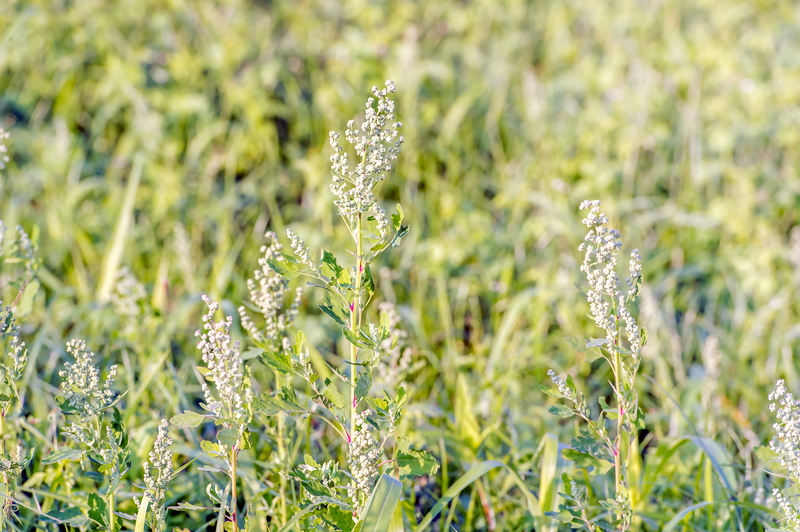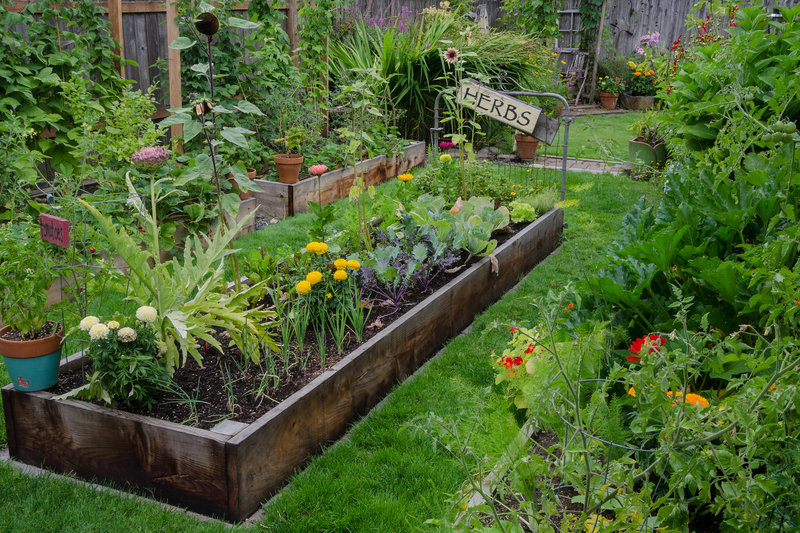Proven Methods to Winterize Your Garden Effectively
Posted on 01/09/2025
Proven Methods to Winterize Your Garden Effectively
As the days grow shorter and temperatures start to drop, responsible gardeners know it's crucial to prepare their outdoor spaces for the cold ahead. If you're wondering how to winterize your garden effectively, you're not alone. Protecting your plants, soil, and garden tools not only ensures your landscape survives winter's grip but also sets you up for thriving growth in spring. In this comprehensive guide, explore expert-approved methods and seasonal gardening tips to weatherproof your beloved green space.
Why Is Winterizing Your Garden Important?
Winterizing your garden isn't just about surviving the cold--it's about giving your plants a head start when warmth returns. Neglecting end-of-season chores can lead to plant disease, pest issues, root damage, and extra work come spring. Properly winterizing the garden safeguards perennials, annuals, shrubs, trees, and even the soil, ensuring a vibrant and fruitful yard year after year.
- Prevents frost damage to sensitive plants
- Protects soil structure and nutrient integrity
- Reduces pest and disease outbreak in spring
- Minimizes winter erosion and nutrient loss
- Keeps tools and equipment in good condition

When Should You Start Garden Winterization?
Timing is key for effective garden winterization. Begin preparations once the average nighttime temperatures consistently drop below 50?F (10?C), but before the first hard frost hits. This window allows you to strengthen plants and address vulnerable areas without causing shock or unforeseen growth spurts that could weaken greenery before dormancy.
Step-By-Step Guide: How to Winterize Your Garden
Ready to get started? These proven methods to winterize your garden effectively will ensure your efforts pay off come spring.
1. Clean Up Your Garden Beds
Begin by removing all dead or diseased plant material from garden beds. Spent annuals, dried stems, and fallen leaves harbor pests and disease, so it's essential to clear them away. Compost healthy materials, but discard anything suspect to prevent recurring issues next season.
- Pull up annuals and cut back perennials (unless their seed heads benefit wildlife).
- Rake leaves from lawns and flower beds to prevent mold.
- Collect rotten fruit and plant debris under trees and shrubs.
2. Amend and Mulch the Soil
Healthy soil is the bedrock of a successful garden. After cleanup, take time to amend the soil with organic matter such as compost or well-rotted manure. This helps replenish nutrients spent during the growing season and supports beneficial microbe activity even in colder months.
- Add a 2-4 inch layer of mulch (straw, shredded leaves, or wood chips) over exposed soil. This insulates roots and prevents winter erosion.
- For vegetable gardens, consider planting a cover crop like winter rye or clover to protect and enrich the soil.
3. Protect Trees, Shrubs, and Perennials
Not all plants are equally resilient in the face of freezing weather. Employ targeted protection methods for vulnerable trees, shrubs, and perennials:
- Wrap young trunks with tree guards or burlap to ward off sunscald and hungry rodents.
- Mound mulch around the base of tender perennials and newly planted trees or shrubs, but do not cover stems or trunks directly.
- Stake tall perennials and wrap them with jute or twine to prevent breakage under heavy snow.
Avoid pruning too late in the season, as it can stimulate new growth that's unable to withstand upcoming frosts.
4. Water Wisely Before the Ground Freezes
Plants need adequate moisture going into winter, especially evergreens and recent plantings. Deep watering just before the first hard freeze helps roots remain hydrated during dormancy. However, overwatering can lead to root rot, so only soak when the soil is dry.
- Use a slow, deep watering method to reach the root zone.
- Avoid watering repeatedly once the ground has frozen solid.
5. Care for Lawn Areas
Your grass needs prepping just like the rest of your landscape. Continue mowing until growth stops, and leave the last mow slightly longer to protect roots. Consider aerating your lawn and applying a late-season fertilizer for healthy regrowth in spring.
6. Winterize Garden Tools and Equipment
Don't forget your valuable tools! Clean, sharpen, and oil your garden equipment to prolong its lifespan and ensure peak performance when you need it again.
- Drain and store hoses and irrigation systems to prevent freezing and cracking.
- Empty fuel from mowers or trimmers if storing over winter.
- Hang tools in a dry shed or garage and apply a light coat of oil to metal surfaces to avoid rust.
7. Winterize Your Compost Pile
Composting doesn't stop when temperatures drop. To keep your compost pile active:
- Add more brown materials (like dried leaves) to balance wet, green waste.
- Turn the pile before winter and cover with a tarp or straw to insulate.
- Harvest finished compost to use as mulch or soil amendment in your winterized beds.
8. Protect Container Plants and Raised Beds
Potted plants are especially at risk in cold climates because soil in containers freezes faster than ground soil. Cluster containers together against a sheltered wall, insulate pots with burlap or bubble wrap, and water as needed until soil freezes.
- For raised beds, lay evergreen boughs or row covers atop sensitive crops.
- If possible, move containers into a garage or shed to ride out severe cold snaps.
Special Considerations for Vegetable Gardens
Winterizing vegetable gardens is vital for a productive next season. After harvesting, remove spent plants, incorporate compost, and mulch heavily. Some cold-hardy crops like kale or Brussels sprouts can be left to mature under protection. Alternatively, plant a cover crop for nutrient retention and soil structure.
Pro Tips for Garden Winterization Success
- Label perennials and bulb locations before mulching or snow cover.
- Clean bird feeders and install them early for beneficial wildlife support.
- Check fences, trellises, and raised bed corners for stability before winter storms.
- Document your fall garden: make notes and take pictures for future reference.
Common Mistakes to Avoid When Winterizing Your Garden
- Waiting too long: Don't postpone until after frost--plants may be damaged or unprotected.
- Over-pruning or fertilizing: This can cause fragile new growth susceptible to cold.
- Ignoring garden pests and diseases: Address now to halt overwintering populations.
- Forgetting to drain hoses or water features can result in costly ruptures and repairs.
Frequently Asked Questions about Garden Winterization
Do I need to cover all my plants for winter?
Not every plant needs covering. Focus on tender perennials, new plantings, and sensitive evergreens. Native plants and hardy perennials often manage without extra insulation.
Can I start winterizing my garden too early?
Yes--early action may leave plants vulnerable to unexpected warm spells or encourage untimely growth. Wait until the growing season is truly over.
Should vegetable beds be left empty during winter?
Bare garden soil is prone to erosion and weed growth. Either mulch heavily or plant a cover crop to protect and enrich beds over winter.
Is mulching necessary every winter?
While not mandatory, mulching pays significant dividends by moderating soil temperatures, preserving moisture, and reducing weed growth throughout the dormant season.

List of Essential Materials for Effective Garden Winterization
- Mulch (wood chips, straw, shredded leaves)
- Soil amendments (compost, manure, lime as needed)
- Burlap, row covers, or frost blankets
- Stakes, jute, or twine for plant support
- Tree guards or trunk wraps for young trees
- Insulating material for containers (bubble wrap, old blankets)
- Pruners, loppers, and garden shears
- Rake, spade, and wheelbarrow
- Quality garden gloves and knee pads
- Labeling tags for plants and bulbs
Conclusion: Make Garden Winterization a Priority
Taking time to winterize your garden thoroughly and effectively is the wisest investment you can make for next season's success. From cleaning up beds and amending soil, to shielding vulnerable plants and caring for tools, each step ensures a lush, productive, and healthy landscape after winter passes. By implementing these proven methods to winterize your garden, you'll enjoy less work and more beauty when warmer days arrive--guaranteed.
Start planning your garden winterization checklist today and set yourself up for gardening success all year round!

